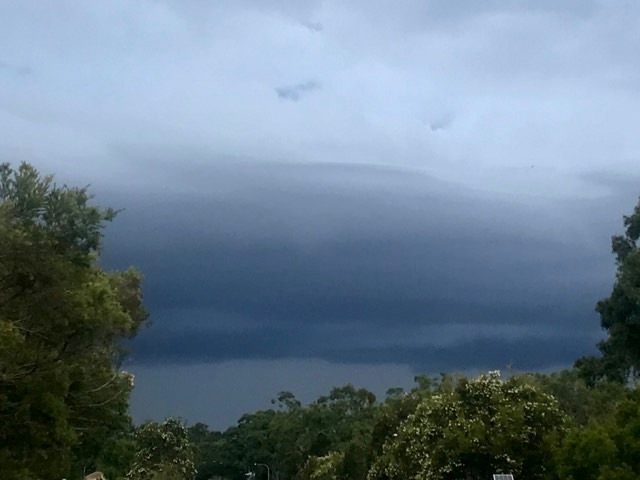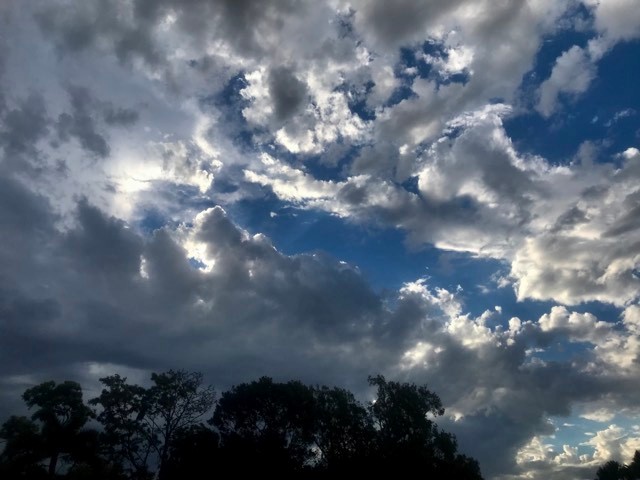The Wonder of Wizards in a Stormy Sky
“Wonder is triggered by beauty, by new discoveries, and by our imaginations. Children live in a constant state of wonder. They’re always learning, exploring, and discovering new things. Children are born with all the wonder they will ever need. Our job is not to take it away.” – Ainsley Arment, The Call of the Wild and Free

South East Queensland has seen some wild weather over the last month, with flooding across many parts. A couple of weeks ago, another storm was rolling in late on a Friday afternoon. I was rushing out the door to collect my daughter from drama class, when I noticed three of the children from the neighbourhood across the road. Bikes were scattered on the concrete driveway, and the three faces seemed mesmerised staring at the skies, pointing and shouting a word here and there. These are three VERY active children, whose afternoon is more commonly spent tearing up and down our cul-de-sac on bikes, or by foot, or playing cricket, soccer or football. While playing outdoors in generally their MO, to see them standing still was not the most common site.
As I got closer, they stopped shouting (in a moment of shyness). Although unable to hold it in, the youngest, Charlie (age 6) could keep it in no more shouting “Voldemort!” When I asked what they were doing Ava (age 9) answered, “We’re just playing a game”. “Oh lovely, a game in the sky!” I answered. Finn (age 7) explained that they were playing ‘Voldemort versus Harry Potter’. When the sky looks like this, you can see Voldemort – he is the black clouds – is fighting Harry Potter – he is the white clouds. It was lovely to see their imaginations alight as they watched the storm brewing (and the wizards duelling). I asked the obvious question – “Who will win?” Without hesitation, Finn assured me that “Harry Potter ALWAYS wins!” While I am no meteorologist, I was confident that the storm would in fact hit. I countered Finn’s prediction, asking if he was sure it would not rain, to which he assured me “Oh it will rain, but then the sun will come back and Harry Potter will win overall”.
Nature is a wonderful muse to children’s play and for children to explore their creativity and imagination. It is through creativity, imagination and wonder that children learn about the world in which they live. There are no limits to their imagination when children have a nature playscape with no pre-determined outcomes or expectations. A stick can be a wand, a sword, a stirring spoon, or a fishing rod….just as the clouds can be duelling wizards!
The experience of wonder is said to nurture creativity is children’s discoveries through play (Glăveanu, 2017). Studies in the USA (Wojciehowski & Ernst, 2018) and more recently in Iran (Aghdasi, Fathirezaie & Abbaspour, 2021) have investigated the influence of nature experiences on creativity in young children by assessing preschool children’s creative thinking. The results from both of these studies revealed that children of nature preschools revealed a significant increase in creative thinking than children of non-nature preschools. They report that outdoor play in natural environments has positive effects on children’s creativity. Nature preschools and nature kindergartens nurture opportunities for children to have extended time to explore, inquire, wonder and play both in – and with – nature. Natural environments provide “endless settings and stimulation for children to make up stories and create elaborate pretend play scenarios” (Finch, 2016, p. 144).
How to encourage children’s creativity in nature:
Ann Stonehouse from Early Childhood Australia suggests the following connections to nature to support children’s creativity:
- Provide lots of open-ended, natural and ‘found’ materials.
- Make available a range of materials that encourage creative expression—for example, paints, blocks, paper, glue, textas, pencils and crayons.
- Include beautiful objects such as stones, shells, flowers, art prints, fabric and baskets.
- Improvise equipment and materials—for example making a teepee from palm fronds.
- Support children to feel a sense of ownership of, and responsibility for, equipment and materials—let them choose and help them learn to care for things.
Furthermore, always allow for time. Time to wonder, to dream, to imagine. Time to hear the wonderful imaginations of children in their natural world…to learn of duelling wizards that you might otherwise have thought were just clouds signalling a run for cover!
“The tree which moves some to tears of joy is in the eyes of others only a green thing that stands in the way. Some see Nature all ridicule and deformity… and some scarce see Nature at all. But to the eyes of the man of imagination, Nature is imagination itself.” – William Blake

References
Aghdasi, M., Fathirezaie, Z. & Abbaspour, K. (2021). The effect of environmental contexts from ecological perspective on motor development and creativity of children. The Quarterly Journal of New Thoughts on Education, 17(2) 1-5 doi: 10.22051/JONTOE.2021.31695.3063
Finch, K. (2016). The risks and benefits of nature play (Ch 7, p. 137-157) In D. Sobel (Ed.). Nature preschools and forest kindergartens: The handbook for outdoor learning, St Paul, MN: Redleaf Press
Glăveanu, V. P. (2017). Creativity and wonder, The Journal of Creative Behavior, 53(2), 171-177, https://doi.org/10.1002/jocb.225
Washington, H. (2018). Education for wonder. Education Sciences, 8(125) doi:10.3390/educsci8030125
Wojciehowski, M. & Ernst, J. (2018). Creative by nature: Investigating the impact of nature preschools on young children’s creative thinking. The International Journal of Early Childhood Environmental Education, 6(1), 3-20
Sintonen, S., Kumpulainen, K. & Vartiainen, J. (2018), Young Children’s Imaginative Play and Dynamic Literacy Practices in the Digital Age, In G. Oakley (Ed.) Mobile Technologies in Children’s Language and Literacy, Emerald Publishing Limited, Bingley, pp. 15-28. Doi:10.1108/978-1-78714-879-620181002





